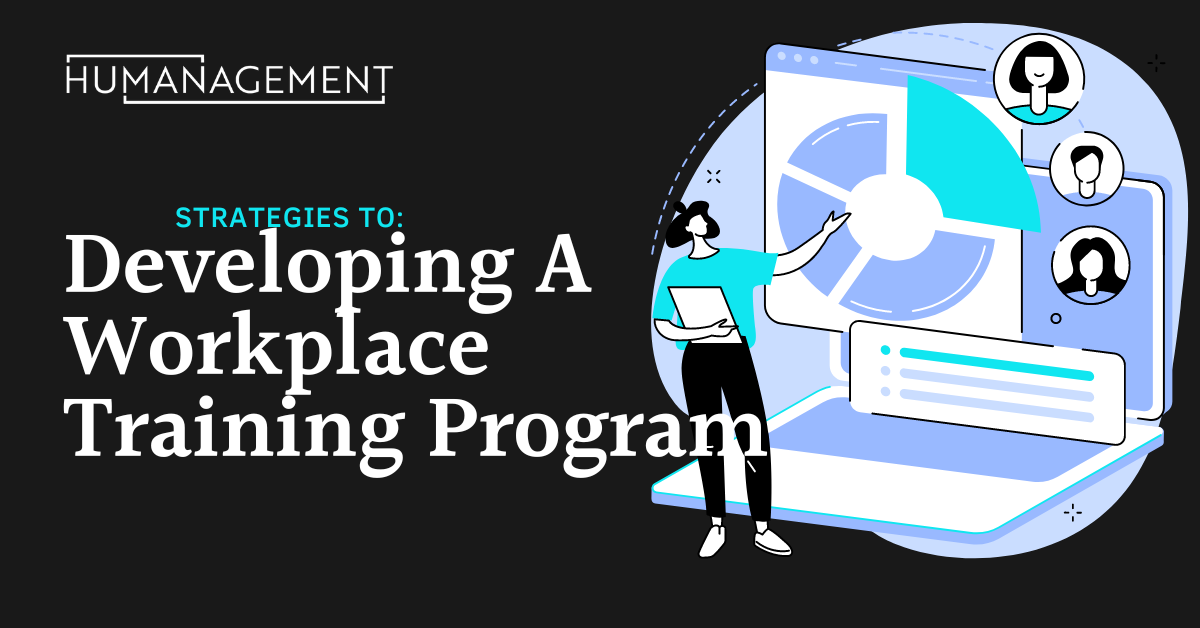

The training an employee receives at a company affects its ability to perform outstandingly. Many businesses are aware of this important truth and value this approach, yet managers and employees still place insufficient importance on training. They argue that because training takes time away from work, productivity suffers as a result, which is the justification for their reaction. Yet, companies can prevent this issue by highlighting how important it is for managers and employees to partake in training in order to be productive.
Creating a training strategy guarantees that these programs integrate seamlessly with your company’s daily activities to optimize the value of each training session.
Developing an effective workplace training program requires a mix of research, planning, and implementation. In this article, we’ll go through training strategies, their advantages, and the procedures you can use to develop them.
A training strategy is a methodical way of developing a staff training program. A key component of staff professional development is ensuring that the skills necessary to produce successful business results are made available. This is done through an effective employee training program. These techniques can be used for both present and future employees.
You may, for instance, employ a training program to learn about new corporate regulations or how to use new technologies with your staff. Also, you can create onboarding training courses to help new hires become more comfortable working for your company more quickly.
Almost every successful company invests heavily in employee training. Creating a training strategy has a number of key advantages, including:
Organizations benefit from having a team with a diverse set of skills because it allows individual employees to perform a variety of tasks. This capacity offers flexibility and lessens the effects when a worker is absent or vacates a job for a different professional opportunity.
Training strategies are a great tool to assist personnel in enhancing their professional capabilities and increasing their effectiveness at work.
While it is crucial for employees to produce high-quality work, structuring their efforts can help the entire organization operate more efficiently. You can help employees understand the organization’s short- and long-term goals by putting organizational training initiatives in place. It can act as a unifying force and promote collaboration when employees can see how their job relates to overall goals.
Because training programs set expectations for employee’s duties, they can aid in enhancing their work performance. Additionally, these programs emphasize the role that their work plays in overall operations. Your staff’s increased productivity and efficiency could result in higher revenues and other advantages for the company through training.
Maintaining a confident workforce might help ensure that employees perform at their best. Training programs lay out a clear set of directives and expectations for workers to follow. They can feel more assured in their capacity to carry out their responsibilities correctly as long as they adhere to those criteria when doing so. This self-assurance can contribute to more effective decision-making and higher-caliber work.
Preserving the employment of people who provide high-quality work and add considerable value to your organization is essential. Employing new staff may result in expenses for the hiring process and possible output losses. For instance, the new personnel could require some time to acclimate or might not be able to instantly match the output levels of your current staff. Training demonstrates to workers your worth. This strategy can give them a sense of security within the organization, increasing the likelihood that they’ll stay and preventing you from having to start looking for new employees.
Programs for training new employees can aid in easing the transition. These employees can be assisted in adjusting to the workplace and learning how to complete their jobs by developing and putting into practice training programs that include new-hire policies. You may provide these personnel with a solid foundation that promotes future success by setting these expectations at the outset.
An in-depth analysis is beneficial before implementing a new training approach at your firm. If you want to update or develop new training techniques for an organization, follow these steps:
There isn’t a single method of employee training that works well for all firms because no two are alike. You can develop plans that optimize the advantages for employees and the broader business by being aware of the particular needs of your organization. To find out what knowledge and skills employees need to work productively or produce high-quality results in your industry, you can conduct a training needs assessment or work with department leaders. To understand what kind of training might assist your staff in achieving these goals, think about using your corporate goals as a guide.
While creating a training strategy, taking into account the skills of your personnel is essential. You can further define the scope of your approach by evaluating how well the current skills and knowledge of your staff members match the training needs you have identified. Performance can be evaluated in a variety of ways, including through direct observation, performance reviews, or conversations with supervisors.
Training programs allow you to close any skill or knowledge gaps if you find that the staff members are currently falling short of your desired performance standards. You can decide which training elements to include in your strategy using these findings. For instance, you might need to create training materials for a certain piece of software. You may find that the skills gap is too great in some circumstances, necessitating the hiring of candidates from outside the company who already possess those skills.
After determining the training requirements for your company, you must make sure you have the resources necessary to put these programs into action. Your ability to plan to use your resources efficiently depends on how well you understand them. Technology, personnel, and financial resources are only a few examples of resources. For plans that call for producing training videos, for instance, having access to video production tools and equipment is an invaluable resource. Time is a valuable resource in a similar way. You should make sure that employees can attend training sessions without it interfering with their work obligations.
You can create a plan for your training strategy using the data acquired in your earlier steps. The training objectives, participating staff members, and any resources or scheduling information needed to carry out the program should be included in each component of your training strategy. To make sure you include all necessary or pertinent information, you should consult with other staff members when creating your plans. In order to make sure the plan and procedures are in line with the objectives set by your organization, they could also offer recommendations.
Monitoring staff performance levels after a training program has been put in place will help you determine how effective the training was. If performance levels continue to fall short of your goals, it might be time to improve your instructional strategies. You can collaborate with managers to come up with strategies that will better train your workers on how to apply the new skills they have acquired. Until you achieve the intended results, try to be adaptable and incorporate modifications.

